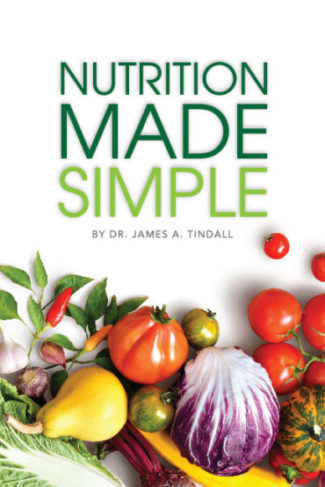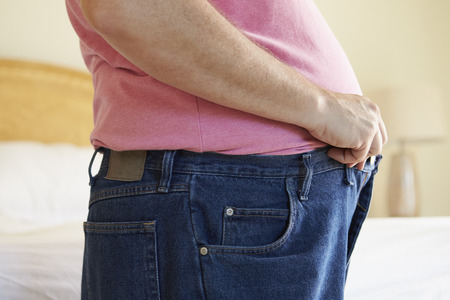Have you ever wondered how belly fat affects your health? It’s a common problem among men and women and, even though you may be fit, there seems to always be that stubborn fat around the belly you have a difficult time getting rid of.
This article will give you some basic tips and belly fat and why it’s harmful to your health. If you have belly fat, it means you have more fat around your organs, which you cannot see. This mean, that you likely have more fat stored deep in your abdomen surrounding the heart, lungs, liver, kidneys, and other vital organs. Of course, it would be better if you did not have this, at least from a health and longevity perspective.
Belly fat can affect your health negatively
Research has shown that deep abdominal fat (termed visceral fat) negatively affects your health and metabolism.
It can often:
• Affect the normal functioning of your organs.
• Disrupt your body’s normal hormone balance, this can be a problem for women who are going through or been through menopause, but men are also affected.
• Release harmful substances into your bloodstream.
As an example, visceral fat can interfere with the liver’s ability to properly regulate cholesterol and blood sugar. These are not issues to be slighted.
Belly fat has been linked to disease
Increased amounts of belly fat have been linked to heart disease, high blood pressure, high cholesterol, high triglycerides and type 2 diabetes. All of these become more serious with age.
So, if you have excess weight around your midsection, you are what we term someone with abdominal obesity. You should measure your abdominal area to see if you may be at risk. Better yet, use the old, “If you can pinch and inch,” adage. If you can pinch an inch or more, you need to begin shedding belly fat.
How can you lose belly fat? There are a few proven strategies that have been shown to target the fat in the belly area more than other areas of the body. Below are six basic methods that are backed by science that will help you lose that belly fat.
Advertisement: Amazon (click on photo for more info)
 1. Don’t eat sugar and avoid sugar-sweetened drinks
1. Don’t eat sugar and avoid sugar-sweetened drinks
Added sugar is very unhealthy thus, consume it sparingly. Studies show that it has uniquely harmful effects on metabolic health. Sugar is half glucose and half fructose. The latter can only be metabolized by the liver in significant amounts. There are literally too many sugar issues to discuss currently. Thus, consume it in moderation. But remember this; sugar is the enemy of weight loss. Decide to minimize the amount of sugar in your diet and consider eliminating sugary drinks except as a treat on occasion. Elimination of sugar should include: sugar-sweetened beverages, sugary sodas, fruit juices and high-sugar sports drinks. This does not apply to whole fruit, which are very healthy and generally have plenty of fiber that helps to mitigate the negative effects of fructose. The amount of fructose you get from fruit is negligible compared to what you get from a diet high in refined sugar.
2. Eat more protein as a great long-term strategy to reduce belly fat
Protein is the most important macronutrient when it comes to losing weight. Most everyone who has read any of the lay magazine regarding health and fitness issues is aware of this. Protein reduces hunger and related cravings by at least 60 percent and will boost the metabolism to burn about 100 more calories per day. Because it reduces cravings, protein helps you to eat less.
Many of the studies showing protein to be effective had protein at 25-30% of calories. That’s what you should aim for. To increase protein, increase your intake of high-protein foods such as whole eggs, fish, seafood, legumes, nuts, meat and dairy products. These are the best protein sources in the diet. If you use whey protein powder supplements, opt for those that have a high protein compared to carbohydrate ratio by about 5:1 protein:carbs. Stay away from the weight-gainer proteins which have opposing proportions, i.e., carbs:proteins of 5:1. For vegans, beans, legumes, and other grains have a good amount of protein, not as much as the above foods, but adequate in most cases.
3. Reduce carbs in your diet
Carb restriction is a very effective way to lose fat. But, carbs are not a bad word since “fat burns in a carbohydrate flame.” Most people simply eat too many simple carbs, which when cut from the diet, causes them to lose their appetite and weight. Low-carb diets lead to 2-3 times more weight loss than low-fat diets. Less carbs also mean less water weight in your system. However, this does not mean you should eliminate carbs from your diet. Primarily, avoid refined carbs (sugar, candy, white bread, etc.) and focus on complex carbs – grains, cereals, etc. For quick weight loss, you can drastically reduce carb intake to about 30-50 grams per day and lose weight rapidly – don’t do this for more than 7-10 days at one time.
Advertisement: CytoCharge (click on photo for more info)

4. Eat foods rich in fiber
Dietary fiber is mostly indigestible plant matter. It is often claimed that eating plenty of fiber can help with weight loss. While there is truth to this, all fibers are not the same. Viscous fibers are those that bind water and form a thick gel, which sits in the stomach. This gel can dramatically slow the movement of food through your digestive system, and slow down the digestion and absorption of nutrients, which results is a prolonged feeling of fullness – termed satiety. Research has shown that an additional 14 grams of fiber per day were linked to a 10 percent decrease in calorie intake and weight loss of 4.5 lbs (2 kg) over 4 months this implies, is that soluble fiber may be particularly effective at reducing the harmful belly fat. This implies that increased fiber can help lose belly fat. Of course, the best way to get more fiber is to eat a lot of plant foods like vegetables and fruit, as well as legumes and whole oat cereal.
5. Exercise vs belly fat
As you may have guessed, one of the best ways to get rid of belly fat is to exercise. Aerobics and resistance training can greatly reduce body fat, which includes belly fat. You can’t spot reduce or do sit ups and lose the belly fat; you need a good overall exercise program that is robust and varied. The workouts we customize for you do exactly that. The exercise program must be balanced so that you retain lean muscle, while burning fat and calories. All aerobics will generally just result in a skinny, fat person. Besides that, exercise leads to reduced inflammation, lower blood-sugar levels and improvements in all the other metabolic abnormalities that are associated with excess abdominal fat.
6. Keep Track of your Calories
Face it, no one wants to count calories, but you should have a basic idea of how many you consume on an average day. We all know this. But, do you know how many you are actually eating? The average American consumes about 4,500 calories per day, when they should be consuming about 2,000 calories per day. How many calories do you need anyway?
If you consider calorie needs without exercise, the rule of thumb is to take the body weight you wish to weigh, multiply it by 10 and add 200. For example, Dave wants to weigh 180 pounds at his height of 5’11”. Thus, 180 x 10 = 1,800 then, add 200 to get 2,000 calories. This is the number of calories he should eat each day without exercise. Depending on the type of exercise(s) he does, he would generally add another 200-400 calories to that amount for each exercise day.
So, use the rule of thumb to determine your basic calorie needs and then, know what you’re eating. For example, ‘low sugar’ generally means high fat. A perfect diet for those who regularly exercise is 50:25:25 percent of carbohydrates – fats – proteins. What you eat is important. Pretty much everyone knows this. Thus, eat as healthy and balanced diet as you can. You can splurge occasionally, just not every day. Also, weigh yourself once a week or so, but don’t be a scale watcher and weigh every day. If you get an idea of how many calories are in the foods you eat, within a week or so, you’ll have a good handle on what you’re consuming without becoming a worrier about the calories.







